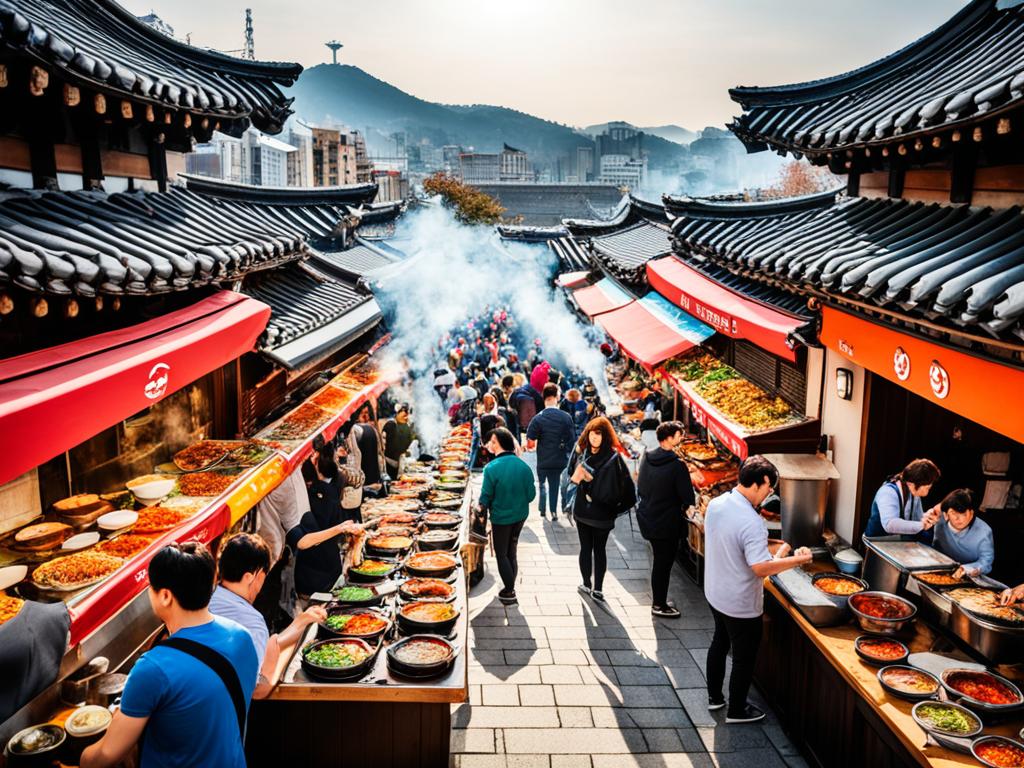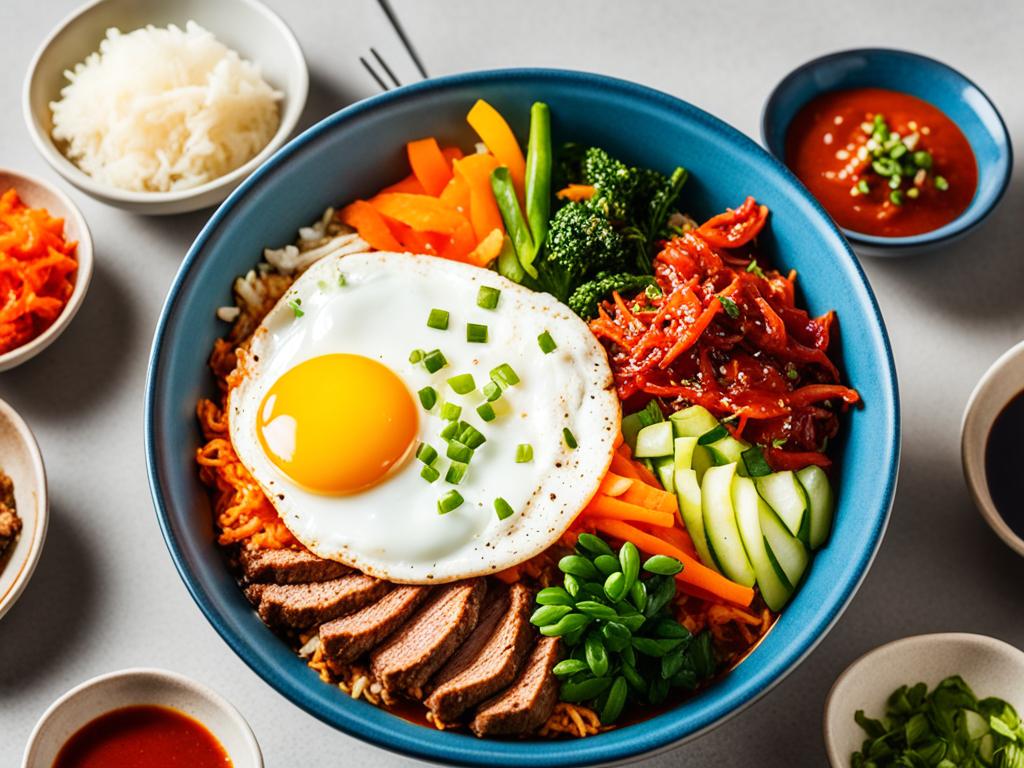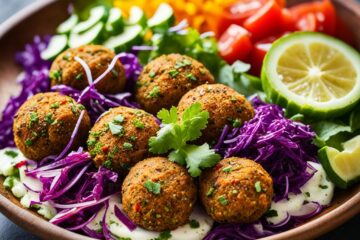Picture yourself at a cozy table with people talking and laughing around you. The smell of cooking food makes you hungry. You take a bite of bibimbap, a famous meal from South Korea. It’s rice mixed with many colorful veggies and topped with a spicy sauce.
This dish is loved for how it brings people together over a delicious meal. Whether you’re a local or a visitor, eating bibimbap is always special. It mixes different tastes and textures perfectly. And it shows off Korea’s long food tradition in every spoonful.
Key Takeaways:
- Bibimbap is a traditional dish from South Korea known for its comforting and satisfying qualities.
- It is made with mixed rice, an assortment of vegetables, and gochujang sauce, which adds a delightful kick.
- Bibimbap holds cultural significance in Korean cuisine and is enjoyed by locals and tourists alike.
- This iconic dish exemplifies the harmonious balance of flavors and textures.
- By exploring bibimbap, we gain a deeper appreciation for the richness of Korean food culture.
The Ingredients that Make Bibimbap Irresistible
Bibimbap’s charm lies in the perfect mix of ingredients. They blend flavors and textures beautifully. Each part plays a key role in why this Korean meal is so loved.
1. Mixed Rice: The Foundation of Flavor
Mixed rice is the heart of bibimbap. It mixes steamed rice with *various grains*. This makes each bite slightly nutty and chewy. The mix boosts nutrition, adding to the dish’s appeal.
2. Vibrant Assortment of Vegetables: A Rainbow of Flavors
Bibimbap features a variety of veggies that jazz up its look and taste. *Spinach and lettuce* bring a cool crunch, while *carrots, zucchini, and mushrooms* add sweet and earthy notes. These veggies aren’t just tasty; they’re also full of good stuff, making bibimbap a smart choice for those watching their diet.
3. Irresistible Kick of Gochujang Sauce: Spicy and Savory
Behind bibimbap’s zing is gochujang sauce. This *red chili paste* gives a sweet, spicy, and savory hit. It deepens the dish’s taste, making it hard to resist. Gochujang makes every bite a joy.
The magic of bibimbap is in its top-notch mixed rice, fresh veggies, and gochujang sauce. Together, they create a dish that’s a feast for the senses. It’s not just delicious; it’s also nutritious, full of essential nutrients.
Bibimbap brings together the vibrant colors and flavors of various vegetables, creating a visually appealing and appetizing dish that is as delightful to eat as it is to behold.
The Makings of Authentic Bibimbap in South Korea
Authentic bibimbap is a treasured dish from South Korea. It’s known for its rich taste and pretty look. Koreans hold it close to their hearts.
Bibimbap is not just food; it’s a work of art. It starts with a bowl of rice. Then, it’s topped with colorful, nutritious foods. This mix creates a perfect taste and texture harmony.
Its key feature is the fresh veggies. You’ll find sautéed spinach, carrots, bean sprouts, and mushrooms. Each veggie adds a special flavor and makes the dish complete.
It’s also topped with a fried egg. The soft yolk spreads over the rice, making every bite better.
Don’t forget about the gochujang sauce. It’s a spicy, slightly sweet paste that’s loved in Korea. It gives bibimbap its signature kick.
Bibimbap has changed over the years. Different areas of South Korea have their own styles. You might see new ingredients or cooking techniques.
This dish is more than just food in Korea. It shows the balance and harmony of Korean cuisine. Every color and ingredient choice has meaning. It all adds up to a beautiful and tasty meal.
“Bibimbap is not just a dish; it is a reflection of our culture, our traditions, and our love for good food.”
In the end, trying bibimbap in South Korea is a must. It’s full of history and culture. The flavors are unique and unforgettable.

Conclusion
Bibimbap is a favorite comfort food in South Korea, now known worldwide. Its mix of flavors, textures, and pretty looks make it a hit.
This dish shows off the many sides of Korean cuisine. With veggies and rice melding together, every bite is a blend of unique tastes.
The story and customs of bibimbap highlight its role as a cultural symbol in South Korea. Its appeal keeps growing, attracting people with its great taste and beautiful look.
To understand more about bibimbap and its place in Korean food, check out this well-researched article about South Korea and cultivated meats.




